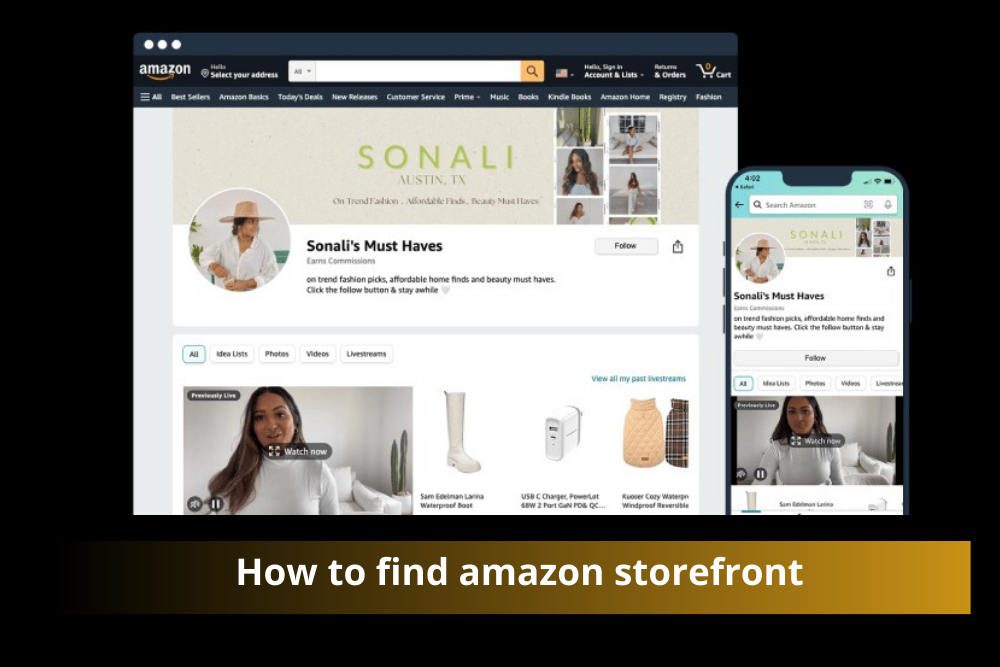In the vast landscape of e-commerce, Amazon stands out as a titan, offering a myriad of opportunities for sellers to showcase their products and reach a global audience. One such avenue provided by Amazon is the Amazon Storefront. In this comprehensive guide, we will delve into what Amazon Storefronts are, how to find them, and why they matter to both sellers and customers.
What are Amazon Storefronts?
Amazon Storefronts are customizable, branded pages within Amazon where sellers can showcase their products, tell their brand story, and engage with customers. These storefronts provide sellers with a unique space to establish their brand identity and differentiate themselves from competitors.
How to Find Amazon Storefronts?
Method 1: Direct Search
The most straightforward way to find Amazon Storefronts is by conducting a direct search on the Amazon platform. Simply enter the name of the brand or seller you’re interested in, followed by “Amazon Storefront,” into the search bar. For example, if you’re looking for the storefront of a clothing brand called “XYZ Apparel,” you would search for “XYZ Apparel Amazon Storefront.”
Method 2: Through Brand Pages
Many brands have dedicated pages on Amazon that serve as gateways to their storefronts. These brand pages often feature a variety of products offered by the brand, along with links or buttons leading to their respective storefronts. You can find these brand pages by searching for the brand name on Amazon or by exploring curated lists and recommendations.
Method 3: From Product Listings
When browsing through product listings on Amazon, you may come across a seller name or brand that catches your interest. By clicking on the seller’s name or brand logo, you can often navigate to their storefront directly from the product listing page.
Why Amazon Storefronts Matter
Enhanced Brand Presence
Amazon Storefronts allow sellers to create a cohesive brand experience for customers. By customizing the layout, imagery, and messaging, sellers can effectively communicate their brand story and values, fostering a stronger connection with shoppers.
Increased Discoverability
Having a dedicated storefront on Amazon can help sellers stand out in a crowded marketplace. By curating their product offerings and showcasing them in a visually appealing manner, sellers can attract more attention from potential customers and drive sales.
Improved Conversion Rates
A well-designed Amazon Storefront can lead to higher conversion rates by providing shoppers with a seamless browsing and purchasing experience. By organizing products into categories, featuring compelling imagery, and incorporating customer reviews and testimonials, sellers can instill confidence in buyers and encourage them to make a purchase.
Frequently Asked Questions (FAQs)
Q1: Do I need to be a registered seller on Amazon to create a storefront?
A1: Yes, to create an Amazon Storefront, you must be a registered seller on the Amazon platform.
Q2: Can I customize the look and feel of my Amazon Storefront?
A2: Absolutely! Amazon provides sellers with a range of customization options, including layout templates, color schemes, and branding elements, to tailor their storefronts to their unique brand identity.
Q3: Are there any additional fees for having an Amazon Storefront?
A3: While there are no additional fees specifically for creating a storefront, sellers are subject to Amazon’s standard selling fees for each transaction made through their storefront.
Conclusion
Amazon Storefronts offer sellers a powerful tool for building their brand, increasing visibility, and driving sales on the Amazon platform. By leveraging the customization options available and crafting compelling storefronts, sellers can create immersive shopping experiences that resonate with customers and ultimately contribute to their success in the e-commerce landscape.


 59
59